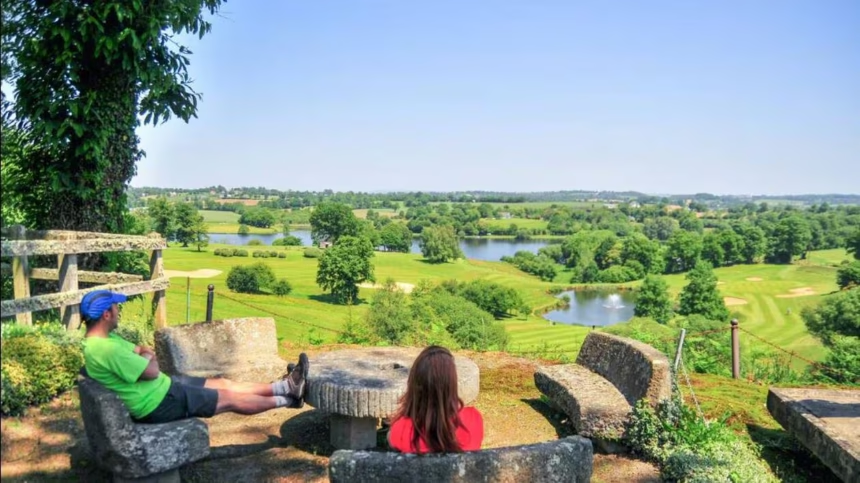Introduction
In the vast tapestry of historical landmarks and geographical wonders, Ruisseau d’Avenelle stands out as a unique place rich in cultural and natural significance. Nestled in a serene corner of France, this creek or stream has a story that intertwines with the history, environment, and local communities. Unlike its more widely known counterparts, Ruisseau d’Avenelle represents much more than just a body of water. In this article, we will delve into its historical context, geographical importance, and its modern-day relevance. Whether you are a history enthusiast, a nature lover, or simply curious about this serene location, the story of Ruisseau d’Avenelle will undoubtedly captivate you.
What is Ruisseau d’Avenelle?
At first glance, Ruisseau d’Avenelle may appear as just another river or stream, but it holds much more than that in terms of historical and ecological significance. The term “ruisseau” translates to “stream” or “brook” in English, while “Avenelle” is a less common term that could relate to the area or history surrounding it. This geographical feature is located in specific region, where it has been a central part of local life for centuries.
Ruisseau d’Avenelle is not just a stream; it is a lifeline for the surrounding ecosystem. The creek meanders through lush landscapes, providing water for plants, animals, and the local community. It is a symbol of the area’s natural beauty and ecological balance, playing a vital role in sustaining the diverse wildlife and supporting the local agriculture.
Historical Significance of Ruisseau d’Avenelle
To truly grasp the importance of Ruisseau d’Avenelle, one must delve into its historical context. Over the centuries, this stream has silently witnessed significant historical events, from regional conflicts to the peaceful coexistence of local villagers. In ancient times, the creek served as a natural boundary for settlements, and over time, it became a crucial source of water for the surrounding farms. This rich history is sure to captivate any history enthusiast.
During significant historical events, the area surrounding Ruisseau d’Avenelle saw substantial changes. Local folklore and historical accounts suggest that the stream was often used as a meeting point for villagers, and in some cases, even as a site for local disputes or peace treaties. While there may not be specific monumental events tied to it, the creek’s presence has undoubtedly shaped the lives of those who have lived near it, serving as a witness to the region’s history.
The legacy of Ruisseau d’Avenelle is also tied to the people who inhabited the region. For centuries, local farmers and villagers have relied on its waters for agriculture, drinking water, and fishing. The stream also played a role in trade routes, as boats and rafts would navigate its waters to transport goods. Its historical importance cannot be overstated, as it has served as a lifeline for many generations.
For more details on other significant geographical features in France, you can explore the Wikipedia article on French Rivers.
Geographical and Ecological Importance
The geographical location of Ruisseau d’Avenelle makes it an essential part of the local ecosystem. Flowing through the region’s name, the stream traverses a variety of landscapes, including forests, meadows, and small valleys. These diverse environments support a wide range of wildlife, making the creek an ecological haven for birds, mammals, and aquatic life. This ecological richness is a testament to the beauty and balance of nature, sure to resonate with any nature lover.
Over the years, the surrounding wetlands and forests have become a critical habitat for rare species of plants and animals, many of which depend on the creek’s waters for survival. For bird watchers and nature enthusiasts, Ruisseau d’Avenelle offers a picturesque setting where one can spot species such as the European kingfisher and various types of fish like trout.
In addition to its role in biodiversity, the creek also contributes to the local agriculture. The nutrient-rich waters help sustain nearby farms, making it a key component of the region’s agricultural output. This symbiotic relationship between nature and the community reflects the creek’s enduring importance in the area.
Ruisseau d’Avenelle Today: Modern Relevance
In the modern era, Ruisseau d’Avenelle is still a vital part of the local landscape, but its role has evolved. No longer just a lifeline for local farmers, it has become a site for tourism, conservation, and even recreation. The tranquil waters and surrounding greenery have attracted both locals and visitors, eager to explore the serene environment.
Today, the area around Ruisseau d’Avenelle is often featured in regional eco-tourism initiatives, with visitors coming to witness its beauty and learn about its ecological and historical significance. Walking trails and educational programs are now available for those interested in the creek’s natural environment and the rich history of the area. Local authorities are actively working to preserve their delicate ecosystem, ensuring that future generations can continue to enjoy its beauty.
Additionally, Ruisseau d’Avenelle serves as an essential location for scientific research related to water conservation and the study of freshwater ecosystems. Its continued preservation is necessary for the study of regional biodiversity.
For more on conservation efforts in France, visit the Wikipedia article on Environmental Conservation in France.
Ruisseau d’Avenelle: A Place of Reflection and Inspiration
For many who visit or live near Ruisseau d’Avenelle, the stream serves as more than just a geographical feature. It is a place for reflection, meditation, and inspiration. The calm flow of the water and the lush landscapes surrounding the creek create an atmosphere that encourages visitors to connect with nature.
Many artists and writers have found inspiration in the peacefulness of Ruisseau d’Avenelle, using it as a setting for their creative works. Whether it’s through paintings, poetry, or even photography, the creek has been a muse for countless creators over the years.
For the local community, the stream represents more than just a geographical feature. It symbolizes continuity and stability, a constant presence throughout generations. It is a reminder of the resilience and connectedness of nature and humanity. This cultural and inspirational value is something the local community can take pride in and feel deeply connected to.
Conclusion
In conclusion, Ruisseau d’Avenelle is more than just a stream. It is a symbol of history, culture, and natural beauty. Its historical significance, ecological importance, and modern-day relevance make it a unique and valuable part of the region. Whether you’re visiting to learn more about its history, enjoy its beauty, or experience its tranquility, Ruisseau d’Avenelle offers something for everyone. As you reflect on the role it plays in the local community, you’ll come to understand why it remains such an essential part of the landscape. Explore further, connect with nature, and embrace the stories that have shaped Ruisseau d’Avenelle for centuries. Its significance continues to unfold, both as a historical treasure and as a living, breathing part of the natural world.






